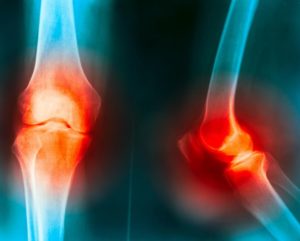In a medical practice specializing in blood circulation disorders of the arms and legs, nearly every day we evaluate people who are having pain in one or both legs. And, one key to helping people who have leg pain is to listen carefully to the patient’s description of their pain as well as ask lots of questions. For instance what makes the pain better or worse, and how long has the pain been apparent? Was there an incident or memorable event when the pain began?
Obviously, this inquiry takes time and the process cannot be substituted by filling out medical history forms. An experienced specialist can begin to digest this information by determining which of the following general categories could involve the pain: orthopedic (bones/joints), neurologic, circulation or soft tissue/inflammation. After a discussion with the patient, the exam portion of the visit should confirm or dispel the doctor’s initial impression and further allow us to hone in on a diagnosis. Finally, an occasional test(s) might be suggested to solidify the diagnosis. Once a diagnosis is made, then a treatment plan can be created…assuming there is a treatment known for the particular problem being addressed.
While orthopedic pain as well as circulatory system pain is fairly straightforward to diagnose especially if basic x-rays and ultrasound exams are performed, pain due to neurologic issues and soft tissue/inflammatory conditions can be exasperatingly difficult to understand. Orthopedic pain often has a characteristic which increases intensity when weight is placed on the leg and orthopedic pain is often associated with joint swelling and deformity. Circulation pain is divided into pain caused by inadequate flow of blood in arteries down the leg to the toes or pain that is due to inefficient blood flow in the veins which transport blood back up the leg on its way to the heart.
Downward blood flow issues usually due to blockage of flow in the arteries manifest initially as aching and pain of the calf and thigh that occurs only when walking but then progresses to pain in the feet and especially the toes when the leg is elevated in bed. Pain due to inefficient flow of blood back to the heart in the veins is different in that patients complain of a heavy painful feeling in the legs or an aching which worsens as the day goes on which is often associated with ankle swelling and throbbing of varicose veins.
Neurologic pain has many different types and qualities and can be caused by a variety of abnormalities from the major nerves of the spine all the way down to the fine hair like nerves in the skin of the feet and toes. Leg pain caused by nerves from the spine often follows a path down the back, hip, thigh and lower leg similar to the actual course of the nerve. Nerve pain in the feet and toes however is often described as if the skin is burning, tingling, on fire and can be associated with a numbing sensation.

Leg pain caused by soft tissue or inflammatory issues is unique in that often nothing makes this pain worse or better and the pain is usually constant. The pain is sometimes so severe that just light touch of the skin or leg muscles evokes significant distress. Occasionally, extremes of temperature, stress due to another illness, and use of certain medications can make this type of pain worse. Most often, the precise cause of this type of pain, due to an inflammatory process in the body, is never found. However, treatment can be effective.
In summary, it is up to your specialist to spend time and listen to your symptoms, ask questions and select a test or two so that the leg pain you are having can be diagnosed and treated. Determining the source of your leg pain by considering the categories of: orthopedic, circulation, neurologic and soft tissue/inflammation is a fundamental exercise that both you and your physician can work together to solve.




